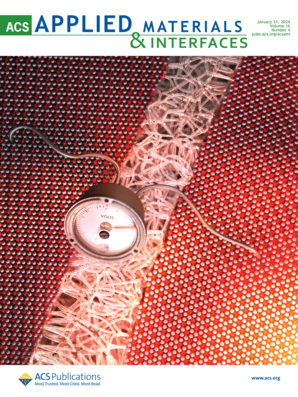Advances in Interface Engineering of MoS2-Based Heterostructures as Bifunctional Electrodes for Efficient Water Splitting.
IF 8.3
2区 材料科学
Q1 MATERIALS SCIENCE, MULTIDISCIPLINARY
引用次数: 0
Abstract
Electrocatalytic water splitting is an innovative approach to energy conversion, reducing reliance on dwindling fossil fuels and mitigating climate change. Molybdenum disulfide (MoS2), a cost-effective two-dimensional material, exhibits exceptional optoelectronic properties suitable for avenue applications. To enhance its stability, bifunctional activity, ample active sites, and electronic structure, interface engineering with diverse materials has been employed. The review begins with the electrochemistry of the hydrogen and oxygen evolution reactions. Then, we outline the fundamentals of MoS2, including its chemical composition, crystal structure, and optoelectronic characteristics. Subsequently, the focus shifts to the interface engineering of MoS2 with metals, metal oxides, metal chalcogenides, and carbon-based substances. The review concludes with a summary and perspectives on future developments.基于二硫化钼异质结构的高效水分解双功能电极界面工程研究进展。
电催化水分解是一种创新的能源转换方法,可以减少对日益减少的化石燃料的依赖,缓解气候变化。二硫化钼(MoS2)是一种具有成本效益的二维材料,具有特殊的光电性能,适合于大道应用。为了增强其稳定性、双功能活性、丰富的活性位点和电子结构,采用了不同材料的界面工程。本文从析氢和析氧反应的电化学性质入手。然后,我们概述了MoS2的基本原理,包括它的化学组成、晶体结构和光电特性。随后,重点转移到二硫化钼与金属、金属氧化物、金属硫族化合物和碳基物质的界面工程。最后,对未来的发展进行了总结和展望。
本文章由计算机程序翻译,如有差异,请以英文原文为准。
求助全文
约1分钟内获得全文
求助全文
来源期刊

ACS Applied Materials & Interfaces
工程技术-材料科学:综合
CiteScore
16.00
自引率
6.30%
发文量
4978
审稿时长
1.8 months
期刊介绍:
ACS Applied Materials & Interfaces is a leading interdisciplinary journal that brings together chemists, engineers, physicists, and biologists to explore the development and utilization of newly-discovered materials and interfacial processes for specific applications. Our journal has experienced remarkable growth since its establishment in 2009, both in terms of the number of articles published and the impact of the research showcased. We are proud to foster a truly global community, with the majority of published articles originating from outside the United States, reflecting the rapid growth of applied research worldwide.
 求助内容:
求助内容: 应助结果提醒方式:
应助结果提醒方式:


